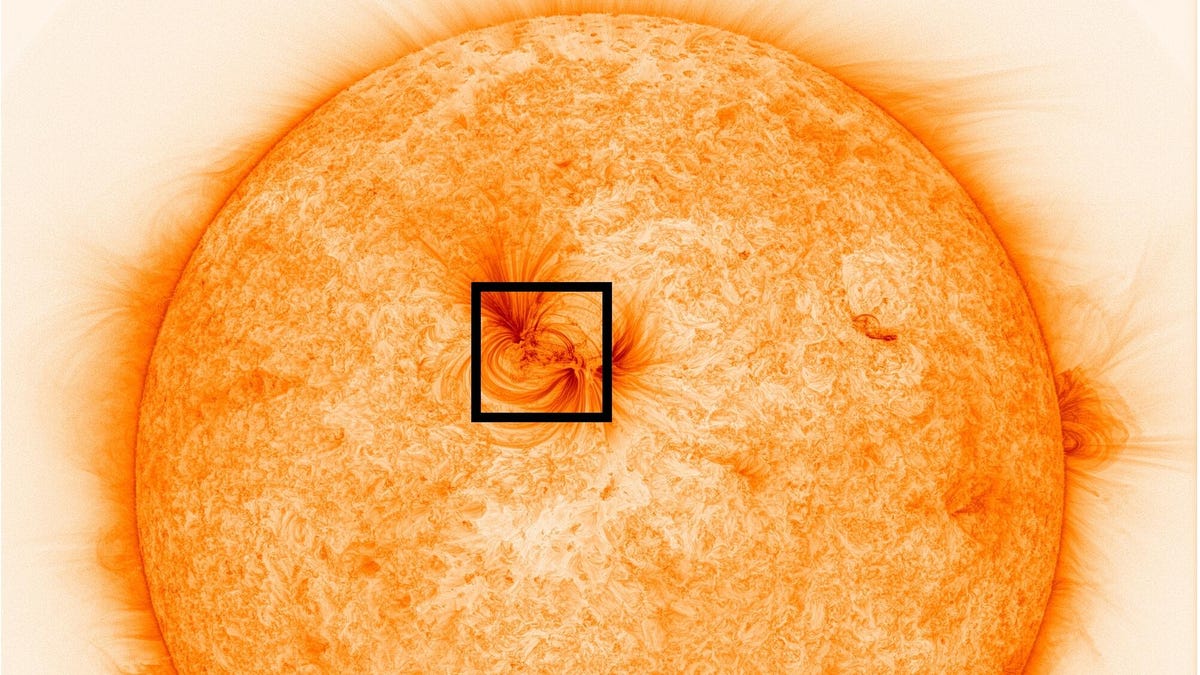NASA solar mission spots wild threads woven into the sun's atmosphere
Three words: hot electrified gases.
Here's an eye-opener. New high-resolution images of the sun show a feature of our closest star we've never seen before: "incredibly fine magnetic threads filled with extremely hot, million-degree plasma."
Scientists from the University of Central Lancashire in the UK and NASA's Marshall Space Flight Center analyzed the data from NASA's High-Resolution Coronal Imager, aka Hi-C, mission and discovered the strands. The threads of "hot, electrified gases" are about 310 miles (500 kilometers) in width.
An image with the Earth superimposed gives some perspective on the size of the threads.
The Earth shows just how big these magnetic threads really are.
Previous images of the sun had shown dark spots where the threads are located. Hi-C, however, was able to deliver what UCLan said are the highest-resolution images of the sun's atmosphere ever captured. The research team published its findings this week in the Astrophysical Journal.
Hi-C is a bit different from most telescopes since it's launched on a sub-orbital rocket. On its last flight in 2018, Hi-C spent about five minutes snapping images of the sun from the edge of space. It returned to Earth with a parachute-assisted landing.
The strands are a bit of a mystery at the moment. "The exact physical mechanism that is creating these pervasive hot strands remains unclear, so scientific debate will now focus on why they are formed, and how their presence helps us understand the eruption of solar flares and solar storms that could affect life on Earth," said UCLan in a release Thursday.
Hi-C isn't done with discoveries yet. The research team is now planning to launch the telescope once again to gather even more data. Between Hi-C, NASA's Parker Solar Probe and the European Space Agency's Solar Orbiter, scientists are slowly teasing out the sun's secrets.


